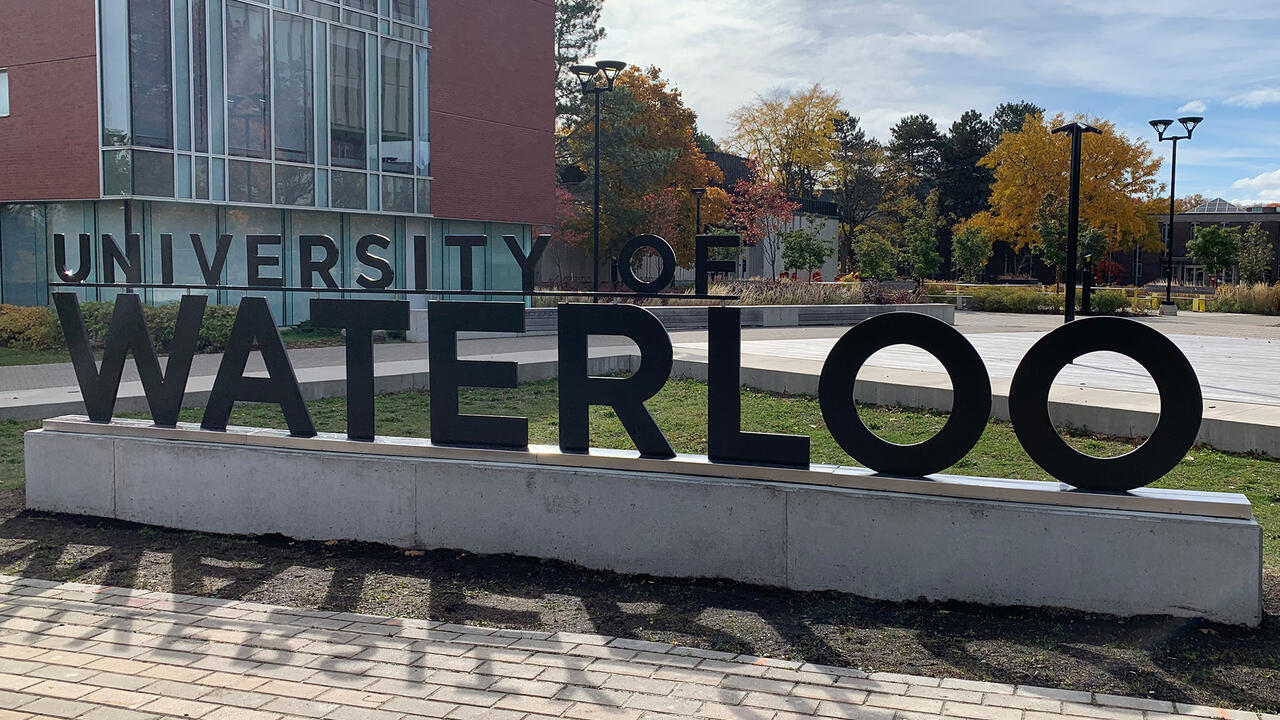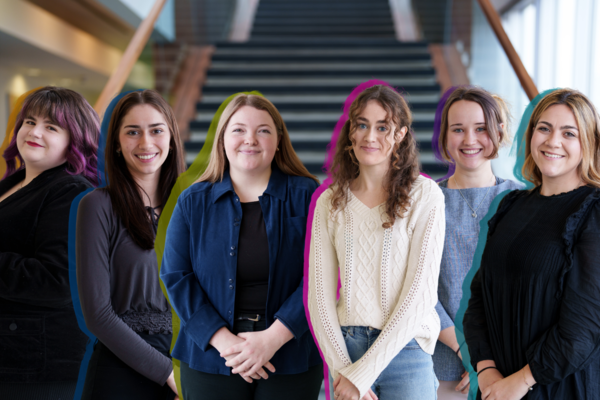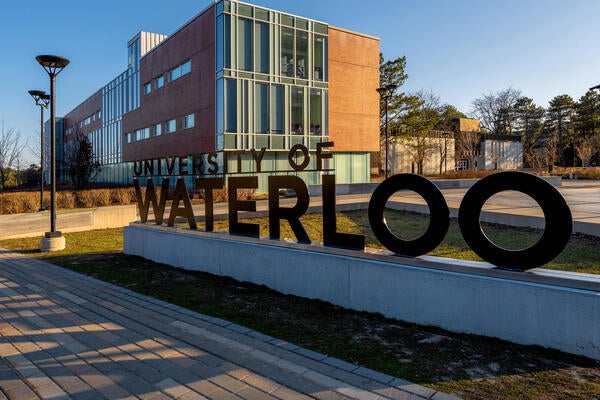WATERLOO, Ont. (Tuesday, Dec. 4, 2012) - Environment 3, the newest building at the University of Waterloo's Faculty of Environment, has earned platinum status for Leadership in Energy and Environmental Design (LEED). The third-party certification administered by the Canada Green Building Council (CaGBC) is an internationally accepted benchmark for the design, construction and operation of high performance green buildings.
The platinum designation is the highest LEED certification possible, recognizing performance in five key areas including sustainable site development, water efficiency, energy efficiency, materials selection, and indoor environmental quality.
"The University of Waterloo is deeply committed to innovative ideas, life-changing research, and a groundbreaking approach to solving many of today's challenges," said Feridun Hamdullahpur, president & vice-chancellor of Waterloo. "This commitment to real-world impact and transformative change serves us today and will guide our future. It is only fitting that a building on the cutting edge of green design be a part of our campus."
Working with Akitt Swanson & Pearce Architects and WalterFedy, Cooper Construction oversaw the design and build of Environment 3, the first LEED Canada Platinum structure at an Ontario university, and only the second on a campus in Canada. The building also hosts Waterloo’s School of Planning and the School of Environment, Enterprise and Development (SEED), thus making it home to Canada’s only LEED Canada Platinum professional school.
The bright and spacious Minto atrium contains a two-storey, plant-covered, living wall connected to the ventilation system. It removes volatile organic compounds, and acts as a living air filter for the entire building.
Using sustainable wood products certified by the Forest Stewardship Council and 88 per cent recycled steel, the building was constructed using a cutting-edge structural system allowing it to sit on top of the existing Environment 2 building, thus minimizing the structure’s physical footprint on the Waterloo campus.
“Achieving a LEED Platinum certification demonstrates the Faculty of Environment’s commitment to implementing our core values in everything we do,” said André Roy, Dean of the Faculty of Environment at Waterloo. “By offering an innovative and environmentally responsible mixed-use place to work and learn, we hope our students will be inspired to go out into the world and shape our sustainable future.”
Water efficiency is achieved through automatic, low-flow faucets, and low-flush toilets and urinals that use rainwater collected from the roof and filtered through the wetlands outside reducing the building’s water consumption by 87 per cent compared to a standard plumbing system.
The careful placement of the windows maximizes daylight in working spaces with automatic sensors, controlling artificial light during dark hours. The panes are glazed using a leading-edge honeycomb technique developed at Waterloo’s solar lab making them five times more insulating. These modifications help Environment 3 consume 45 per cent less energy than a standard building of its size. Much of this energy is supplied by an array of rooftop solar panels providing up to 67,000 kWh/year of power, roughly equivalent to the annual consumption of seven single-family homes.
About the Faculty of Environment
Building on nearly four decades of academic excellence, Waterloo’s Faculty of Environment creates knowledge, nurtures learning, and promotes action to shape our sustainable future in Canada and internationally. As Waterloo’s fastest growing faculty, it is focused on developing and implementing the smart solutions needed to address the most critical issues of environment and sustainability that threaten the health and prosperity of our world today.








